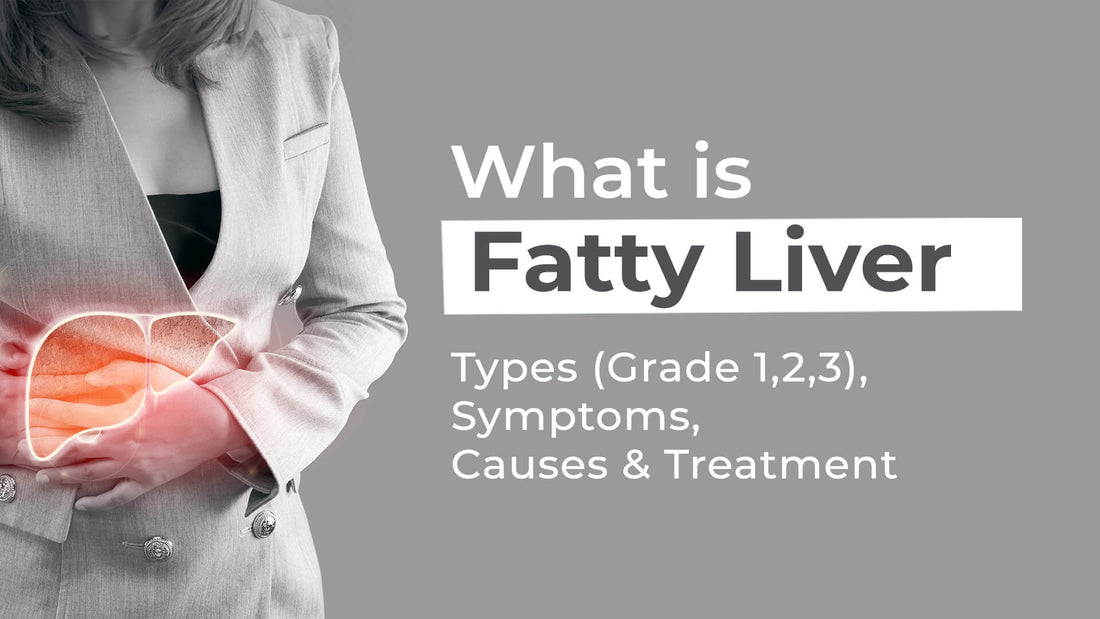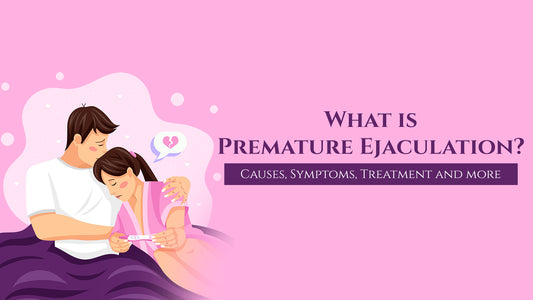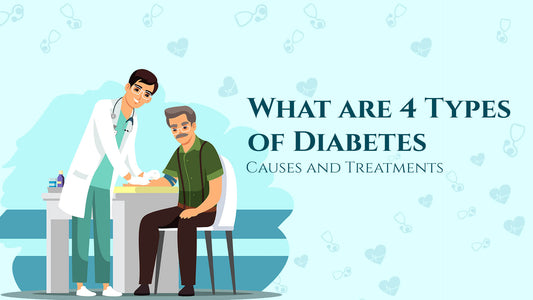According to AIIMS, 38% of Indians suffer from nonalcoholic fatty liver disease, as it is a common condition affecting millions of people in the world. This disease is often overlooked until it progresses to a concerning stage. So it is essential to know all the ins and outs of fatty liver to be well aware. In this blog, we'll break down fatty liver disease and its types and reveal the signs that may signal the condition—its causes, and the ways to treat it.
What is a Fatty Liver?
Fatty Liver disease occurs when fat boosts up in the liver. Actually, a healthy liver holds little to no fat. The liver is the vital organ of our body that processes food and drains toxins from our blood. When you eat food in excess or drink alcohol over the top, then the calories convert into fat and are stored in the liver.
Once the fat touches 5% or more of your liver's weight, it causes inflammation, leading to fatty liver disease. This traumatizes the liver, and in severe cases, it results in liver failure. Nevertheless, it doesn't show symptoms initially but later gives rise to many health problems. Fatty liver is also known as Steatotic liver disease—the term "Steatosis" outlines the fat growth in an organ.
Types of Fatty liver
Basically, there are two major types of fatty liver such as nonalcoholic and alcoholic.
Nonalcoholic fatty liver disease (NAFLD)
It is a liver disorder in which excess fat is stored in the liver of a person who doesn't take much alcohol. This medical condition is known as nonalcoholic fatty liver disease.
It follows the liver condition from primary fatty liver called steatosis and other nonalcoholic steatohepatitis, which is referred to as NASH, causing inflammation in the liver due to excess fat buildup.
Mostly, NAFLD doesn't trigger symptoms during the initial phase. However, it leads to liver fibrosis, cirrhosis, and liver failure if untreated.
Alcoholic fatty liver disease (AFLD)
This type of fatty liver occurs due to the consumption of alcohol in the long run and is among the earliest stages of liver disease. The toxicity of alcohol builds up fat in the liver and causes inflammation and injury to the liver. AFLD covers two main conditions such as alcoholic fatty liver (steatosis) and alcoholic steatohepatitis (ASH).
Similar to NAFLD, AFLD can cause fibrosis, cirrhosis, and liver cancer in habitual alcohol drinkers.
Try Ayurvedic Medicine "Liver Care" for Fatty Liver
Fatty Liver Grades
Based on the accumulation of fats in the liver, fatty liver disease is categorized into three grades. Grade 1 Fatty Liver, Grade 2 Fatty Liver and Grade 3 Fatty Liver
- Grade 1 Fatty Liver: Grade 1 is a mild fatty liver, usually the early stage of fat deposition in the liver, which is up to 5%-33% with less inflammation.
- Grade 2 Fatty Liver: Grade 2 is a moderately fatty liver, followed by some inflammation and liver damage. Fat storage is about 34% to 66% in this grade.
- Grade 3 Fatty Liver: Grade 3 is a severe fatty liver with 66% fat buildup and significant liver damage as compared to the other two grades.
Symptoms of fatty liver
The symptoms vary depending on the stages of fatty liver: Simple fatty liver, steatohepatitis, fibrosis, and cirrhosis. Both types, AFLD and NAFLD, have the same symptoms according to these stages. The fatty liver doesn't usually provoke symptoms in the patient. However, you might experience
- Feeling tired
- Weight loss
- Sharp pain in the upper right part of your abdomen.
Moreover, in the severe liver damage stage, cirrhosis, which is not a reversible condition, may drive the following symptoms;
- Yellow eyes and skin (jaundice)
- Bruising
- Abdominal pain
- Sleepiness and autonomic dysfunction
- Postural dizziness
- Dark urine
- Vomiting blood
- Itchy skin
- Swelling in legs
- Pale or black stools
- Breast enlargement in men
- Loss of appetite
- nausea
- Itchy skin
- Clumps of blood vessels beneath your skin
Causes of fatty liver
In AFLD, it is clear that drinking excess alcohol causes fatty liver as the metabolic process of the liver is disrupted, leading to the accumulation of fat in the liver. If you consume beyond the 10 standard drinks by the week, then the risk factor of fatty liver rises for you.
However, for a person who doesn't consume much alcohol, it's likely that the body produces excess fat and doesn't digest it enough. Some of the factors that may cause fatty liver disease in a person with less alcohol consumption are;
Other less prevalent causes are
- Pregnancy
- Potential side effects of specific medication
- Underactive thyroid
- hepatitis C
- Polycystic ovary syndrome (PCOS)
- Unusual Genetic condition
- Side effects from some types of medications
- Hepatitis C
- Certain rare genetic conditions
How is fatty liver disease diagnosed?
While the fatty liver mainly doesn't have symptoms, your doctor can diagnose it by your blood test. An ultrasound and an MRI scan help diagnose the fatty liver. Moreover, in some severe cases, the healthcare provider recommends a liver biopsy (tissue sample) to identify how much the liver is damaged. You can also adopt some self-care for fatty liver disease.
Treatment of Fatty liver
After a diagnosis of fatty liver, your doctor recommends you change your lifestyle as there is no particular medication proven to treat fatty liver disease completely. However, you can get better and even reverse your condition somehow by;
- Healthy diet
- Weight lose
- Manage & control blood sugar
- Balance your high cholesterol
- Restrict the use of alcohol and give up smoking
- Receive vaccination for hepatitis A and hepatitis B
- In case of severe cirrhosis, doctors may advise to take specific medication, surgery, or liver transplants in liver failure
Conclusion
The excess fat buildup in the liver triggers fatty liver disease. This can happen when you consume heavy alcohol over time, commonly known as alcoholic fatty liver disease (AFLD). On the other hand, people who take little to no alcohol also accumulate fat in the liver, which is termed nonalcoholic fatty liver disease (NAFLD).
While the fatty liver doesn't induce serious symptoms in patients, they may experience tiredness and pain in the upper right abdomen. However, you can treat this condition by changing your lifestyle habits for healthy liver function.




